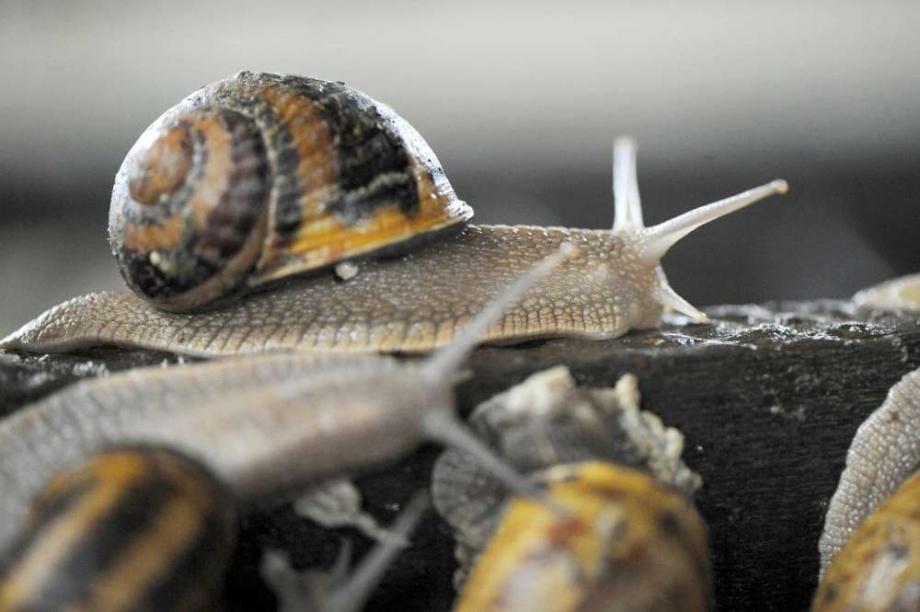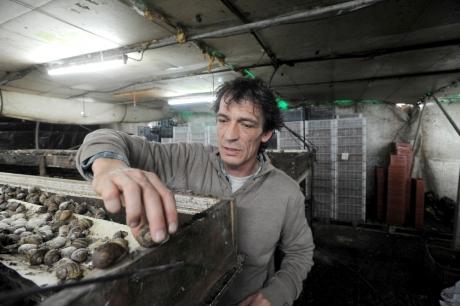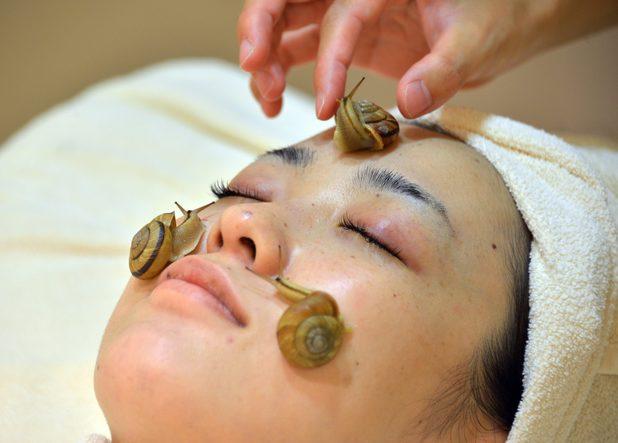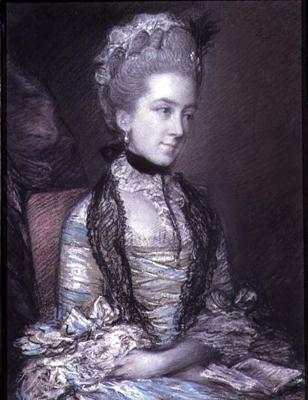 The factory – snails manufacturing the latest beauty product, slime
The factory – snails manufacturing the latest beauty product, slimeIf there’s anything around with a longer list of ingredients than commercially prepared food, it has to be women’s cosmetics. While we mightn’t be prepared to consume all manner of chemical compounds, we don’t seem to mind smearing them over our skin, rubbing them into our hair, and sliding them over our lips.
Cosmetic manufacturers seem to go from highly complicated man-made formulas to the “natural” products. One miracle skin treatment currently in the limelight comes in the latter category and may demand a bit of “grin and bear it” from the consumer. It’s snail slime.
Apparently the molluscs leave behind a collagen-laden trail of mucus as they navigate our vegetable plots and flower gardens. And not just collagen but also antibiotics, glycolic acid and other chemicals that heal cuts and regenerate skin cells.
 Snail-raiser Louis Marie Guedon
Snail-raiser Louis Marie GuedonLouis-Marie Guedon is a snail farmer from Champagnolles has developed a technique for harvesting the slime and plans to turn it into an industrial-scale snail mucus extraction system to harvest 15 tonnes of the ugh-factor ingredient next year
And, according to Reuters, local cosmetic labs and cosmetic makers have been signing contracts for Guedon, 47, to keep them supplied. One has already ordered three tonnes of tomorrow’s new face-saver
The Frenchman already sells 25 million snails a year to snail farmers for those who prefer to consume the molluscs laced with garlic and herbs. With a breeding stock of 650,000 snails, he’s unlikely to run out of the raw product. And no snails are slaughtered in the cosmetic exgtraction process, apparently. Salt is used but the snails are not killed.
 Japanese salons offer snail facials
Japanese salons offer snail facialsSnail mucus has already cropped up in beauty products sold in Asia and South America, but has yet to catch on in Europe. For the truly adventurous, a spa in Tokyo offers facials using real live snails.
In 2006, Chilean farmers observed visibly smoother skin after handling snails they were breeding for the French food market. A snail’s secretion protects its own skin from cuts, bacteria, and powerful UV rays, making mother nature’s gloop a prime source for proteins that eliminate dead cells and regenerate skin, according to NBC News.
It’s a treatment that that has been used as far back as ancient Greece. Hippocrates reportedly prescribed a mixture of sour milk and crushed snails for skin inflammations. These days, it’s marketed as an acne treatment, spot and scar remover, and burn healer.
Throughout history, famous beauties have had their own recipes for preserving their looks.
Marquise Crespy followed the orange diet and chroniclers noted, when she was 98 years old, her complexion was like a smooth and delicate apple blossom – attributed to her eight-a-day orange habit followed for the previous 40 years.

Madame de Pompadour – cucumber juice
Madame Pompadour, who had one of the finest skins of the day, used to wipe her face every morning with a soft cloth dipped in cucumber juice – the fore-runner to cucumber eye pads, no doubt.
Water distilled from rosemary was the beauty secret of Queen Elizabeth of Hungary, a recipe reputedly obtained from a hermit.

Caroline, Duchess of Marlborough – honey water
That queen of society, the celebrated Duchess of Marlborough preserved her abundant tresses by using honey water and beauties in the Royal Courts of Louis XIV and Louis XV used a facial of honey, vinegar and shredded sandalwood.
Some beauties suffered an untimely death thanks to painting their faces with toxic substances
Lemons also played their part in the beauty stakes. Royalty and other gentlewomen wanting slender figures drank copious amount of hot lemon – with no sugar – on rising in the morning and before bed at night. And the juice of a lemon in a cup of hot coffee was the pre-Panadol remedy for a headache.
And beauty was not just for society’s elite. Reportedly, the peasants of France kept their skin soft with a decoction of quince peelings steeped in water, drained and supplemented by a little rosemary. This was used to bathe the face.
Sources:
Reuters
NBC News
National Library of New Zealand PapersPast collection
www.sudouest.fr

